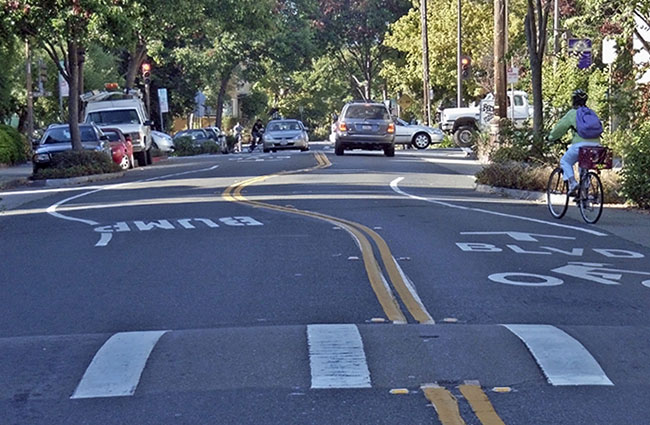#MoveTheDate
0.6
Days
Lowering speed limits for cars would move Earth Overshoot Day by 0.6 days.
How does it #MoveTheDate?
Studies show that slower speeds have the potential to lower emissions from driving by 25% in urban areas, and by between 12% and 18% on freeways.
How is it scalable?
Cities can begin to embrace narrower street design which self-enforces slower speed limits in urban areas. Policy and enforcement changes can be made to lower speed limits on freeways.
How does it #MoveTheDate?
Studies show that slower speeds have the potential to lower emissions from driving by 25% in urban areas, and by between 12% and 18% on freeways.
How is it scalable?
Cities can begin to embrace narrower street design which self-enforces slower speed limits in urban areas. Policy and enforcement changes can be made to lower speed limits on freeways.

Cars drive more efficiently at slower speeds because of lower wind-resistance and less energy spent accelerating and decelerating, thereby reducing fuel consumption. Speeding, rapid acceleration, and braking can lower gas mileage by 33% on the highway and by 5% in the city, so it is an advantage to both the driver (in terms of fuel cost savings) and the environment (in terms of CO2 emissions savings) to maintain lower speeds and accelerate smoothly.
According to Transport for London, physical engineering in street design is a more effective way of achieving lower speed limits than changing the speed limit numbers on signs. One way cities can begin to encourage slower speeds is by embracing narrower street design. This has the added benefit of making streets more inviting to pedestrians and cyclists, which further reduces CO2 emissions by leading to fewer vehicles on the road.
There’s no benefit in waiting!
Acting now puts you at a strategic advantage in a world increasingly defined by ecological overshoot. Countless solutions exist that #MoveTheDate. They’re creative, economically viable, and ready to deploy at scale. With them, we can make ourselves more resilient and #MoveTheDate of Earth Overshoot Day. If we move the date 6 days each year, humanity can be out of overshoot before 2050.
